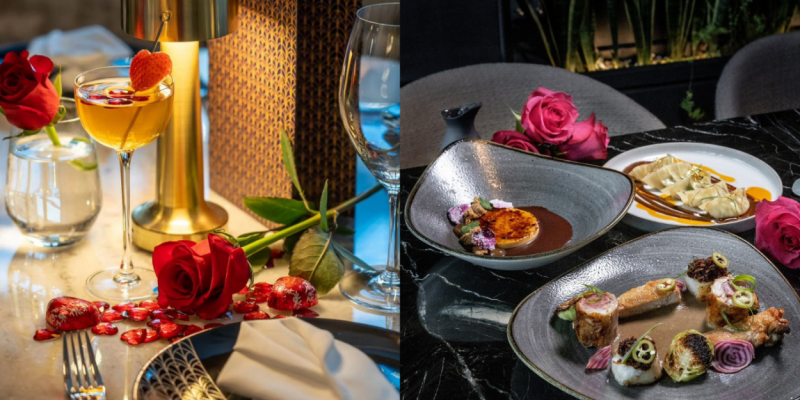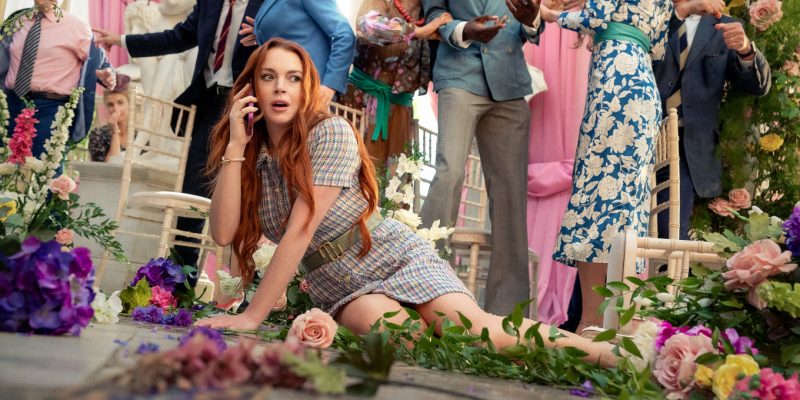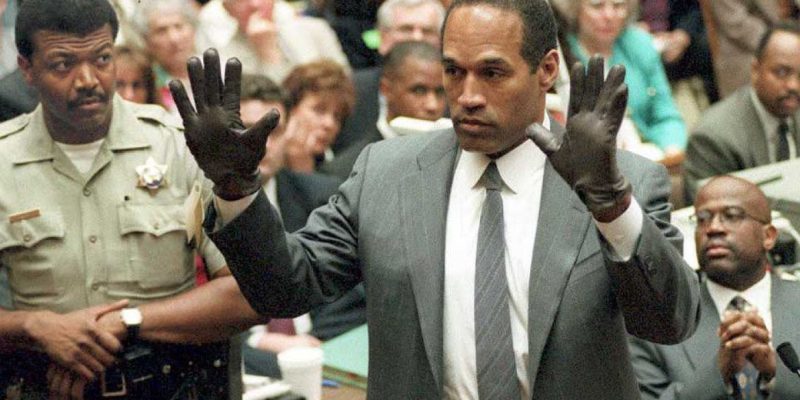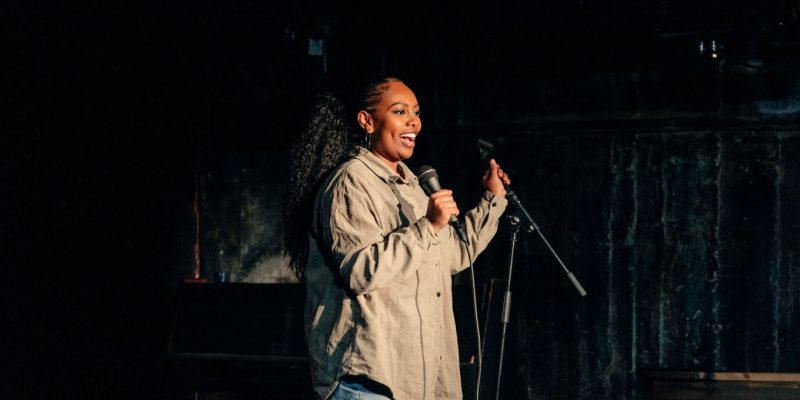Culture
At University, White Privilege Goes Unchecked
"For students, universities are spaces where young white people can act on both their greatest desires for Blackness and their most anti-Black fantasies."
by : Eternity Martis- Aug 26th, 2020

The following is an excerpt from They Said This Would Be Fun by Eternity Martis.
When it came to partying, I was a late bloomer. While the kids I went to Catholic high school with were getting trashed every weekend at house parties, I wandered the halls for the first year and a half, the lone Black emo kid. I wore black clothing, pink eyeshadow, and bows in my hair. I accessorized my school uniform with spiked rubber bracelets, and dyed my hair various shades of red. I carried around a photo album containing pictures of my favourite bands – Good Charlotte, My Chemical Romance, Fall Out Boy, AFI, From First to Last – that I’d printed out, wasting all the ink in my Lexmark.
By the end of Grade 10, I formed a group of equally outcasted girls: Shailene, a perpetually eye-rolling, indie biracial chick who couldn’t escape the racist jokes of her new white boyfriend’s friends; Arina, a badass transfer student, from an Armenian school, who had the latest Air Jordans; Jessa, a rich, progressive white girl with a bad attitude and a love of vampires and serial killers, and Tasmina – or Taz.
I met Taz in our second-semester science class. In the hallways, she smiled at me – reassurance that there were people who didn’t think of me as a loner. At lunch, I’d see her leaning against the lockers with a group of science geeks, pretending to be interested in their at-home experiments, or sitting by herself and eating her home-cooked Indian meals. One of those days, I approached her.
“Isn’t it the worst when you want to eat curry but it smells so strong?” I said.
“Yeah, I’m pretty tired of the white kids in the cafeteria complaining,” she said with a weak smile.
“Wanna come eat lunch with us instead?” I asked her.
“I would love that.”
We bonded over our brown families – both of us with overprotective mothers and lax father figures – and about how excited we were to get out of this teenage hellhole.
Together, the five of us hated everything about and everyone at high school: the hypocrisy of Catholicism, the gender roles that teenagers played into, the cafeteria politics, the school rules, the joke of a sex-ed curriculum, the shitty people. Adulthood was within reach; we just wanted to graduate and get out of there.
But we were also little feminists, unbeknownst to our own selves. Jessa and I found an escape in literature, and for our assignments we took up queer, feminist, and Black authors: Dionne Brand, Toni Morrison, Sapphire, Virginia Woolf, Jessica Valenti. We all refused to hold ourselves to men’s standards, growing out our leg hair in defiance of the male teachers who stared at our legs as they scolded us for our short kilts. As the battle waged over kilt length, we hiked ours up higher.
We protested the patriarchy at all costs. We worked hard at the gym to get our bodies strong – a fuck-you to the boys who body-shamed muscular women. We bought lingerie to admire ourselves in, and gifted each other sexy underwear and pyjama sets for Christmas. We swore and smoked and burped out loud, and kissed each other in the back aisle of the movie theatre as our bags of beer stolen from home rested at our feet.
We were wholly unladylike and totally bored of our suburban teen existence. On weekends, I’d pick everyone up in my mom’s ’98 Honda Civic so we could go to the sex shop to buy condoms in case any of us ever lost our virginity. In the evenings after school we’d head to Jessa’s house to watch True Blood reruns, nodding in agreement about the kind of relationship drama we wanted one day. When Obama was elected president, we skipped class and threw a dance party, jumping around in our bras and lace panties and swinging our kilts in the air. That a nation like America could elect someone who had spent their whole life on the outside felt reassuring to people like us – like we would one day find our place in the world too.
After graduation, we all went our separate ways, except for Taz and I, who together headed to Western University. We wanted the keggers and wild house parties, dancing under strobe lights at all hours of the night, beer showers in lieu of champagne. I wanted partying to help me break out of my shy, painfully introverted shell, and so I immediately dove headfirst into any juvenile behaviour I could.
Residence was the perfect environment. Each weekend, there were parties on every floor. Fifteen or more people would cram into a tiny room to play beer pong, flip cup, or Centurion (a torturous game where bored of our suburban teen existence.you take a shot of beer every minute for a hundred minutes). Rooms were humid and sticky with body heat, as people danced and kissed and hugged and fell down while the vibration from loud music radiated through the furniture. Surfaces reeked of spilled vodka, rum, and coolers; spittle flew as drunk people slurred and shouted, pushed and shoved by others trying to get to the washroom to throw up. By 3 a.m., people were either passed out in bed or in the hall, or on the way to the campus hospital to get their stomach pumped. It was chaotic and messy, and to my surprise I fit right in, playing drinking games, perfecting my fist bumps and fist pumps (it was the era of Jersey Shore, yeah buddy!), dancing like a maniac in front of people I liked and trusted.
The lucky people who had a decent fake ID talked about the kinds of partying that took place outside of the university grounds. I couldn’t find the ID of a Black girl anywhere in the vicinity, so I clung on to stories about epic parties from those who returned to tell the tale, waiting impatiently for my turn when I came back in the fall. Until then, most of what Taz and I knew about London, Ont., was from reading “Outside the Bubble,” a weekly flyer that people taped to bathroom stalls to let you know what was going on in the city.
We counted down the weeks until we moved out of residence for summer break, then the months until our nineteenth birthdays. When we returned in September, legal and ready to party at every bar in downtown London, we could only imagine what fun we’d get ourselves into.
I saw them the moment they entered the bar.
Three ghoulish figures, eyes glowing in the dark like nocturnal animals, floated towards us through the dense crowd of Halloween-goers. The hairs on my arm shot up. Every movement slowed and blurred, as if time and space had abandoned me. The bass from Ne-Yo and Pitbull’s “Give Me Everything” vibrated through my body, but I couldn’t hear the words.
I was at Jack’s with Taz and our friend Malcolm. We were finally in second year, and legal, and we wanted to spend our first adult Halloween at this charmingly dingy bar on Richmond Row that reeked of bleach and tequila. Dressed in expensive store-bought costumes, we threw back Jägerbombs from water-stained shot glasses.
But my excitement was short-lived, and my friends’ was about to be too: as these bodies moved closer, eyes still on mine, I wondered how I could warn them about something I didn’t quite understand myself.
The white people walked right up to Taz, Malcolm, and I, the only people of colour in Jack’s. Three for three.
Dressed as cotton pickers, with over-drawn red lips, denim overalls, and straw hats with blond hair peeking out the sides, their faces were painted the most offensive coal black I’ve ever seen. A thin layer of unpainted white skin surrounded their inexpressive blue eyes.
Two guys and a girl stood before us in blackface, smiling smugly, mouths closed, not saying a word.
“What the hell is this?” My mouth had taken the lead before my mind was able to decide on the appropriate reaction, but they said nothing, only smiled.
Malcolm laughed so hard his drink spilled out of his mouth. “This is absurd,” he said between gasps as he walked away.
Taz stifled her own laugh. But, I was growing angrier and more intimidated.
“Can’t you talk? What the hell is your problem?” I yelled at the three people in front of me.
Still no answer. They continued to stare at me in silence, unblinking, leering. A bead of sweat trickled down my temple.
“You think this is funny? Say something!” My ears were ringing. Drunken bar patrons pushed past me and into the crowd. So many bodies around me – witnesses – yet no one stopped to help. All I could hear was my own voice screaming at these smiling white kids, with their black faces, to speak.
They looked back at me, composed, still smiling, daring me to lose my mind. I wanted the smug grins to dissolve off their faces, leaving behind remorseful tears. I wanted to give in to the humiliation and cry tears of my own. I wanted to join my friends and laugh until this no longer felt threatening, until this moment that should not still exist today was nothing but a distant, repressed memory.
I don’t know how much time passed, but it felt like hours. Then, still smiling, they turned their black, painted faces and slowly disappeared into the crowd.
They moved on to their next victims, three South Asian people who had just arrived and were getting drinks at the bar. I made eye contact with the woman in that group, whose eyes, glassy with terror and pain, reflected my own. Then I looked away. I did not intervene; I couldn’t. I turned my back and remained silent.
Something changed that night. My illusion of safety was shattered, and a feeling of deep discomfort made its permanent home inside me. It wasn’t the first time I’d experienced racism since moving to London, but it was the first time it had been so malicious. What I didn’t know was that it was only the beginning.
In 2013, actress Julianne Hough wore blackface as part of her Halloween costume as Crazy Eyes from Orange Is the New Black. Actor Colton Haynes has dressed up in blackface on three different occasions. Comedians Sarah Silverman, Jimmy Fallon, and Jimmy Kimmel have all worn blackface on TV, and drag queens like Daytona Bitch and Charlie Hides have performed in blackface. Mindy Kaling’s brother even wrote a book about it: he changed his appearance to look like a Black man in order to have a better shot at getting into medical school. Virginia governor Ralph Northam, Attorney General Mark Herring, and even Canadian Prime Minister Justin Trudeau have all been busted by yearbook or party photos showing them in blackface.
Blackface is also embedded in fashion. Magazines like Vogue Netherlands, Vogue Paris, and Numéro have run photographs of white models painted in blackface. In the past two years, Prada had to pull a line of black monkey figurines with big, pronounced red lips that resembled the racist imagery of the Sambo stereotype, and Gucci removed a black turtleneck sweater from sale – it pulled up over the bottom of the face and featured an over-sized red lip around the cut-out mouth.
Today’s culture has evolved to include digital minstrel shows. Digital blackface – sharing a gif or meme featuring a Black person (especially making exaggerated gestures or reactions) by someone who isn’t Black, is a part of daily online and text communication. We’ve all seen non-Black people post side-eyeing Prince, eye-rolling Rihanna and James Harden, or an endless stream of Black reality stars, celebrities, and everyday Black people who end up as memes. Our expressions of emotion, too often perceived in real life as over-the-top and obnoxious, are reduced to looping videos as an emotional stand-in or for the comedic relief of others.
And that’s what blackface is: the performance of Black stereotypes that reproduce negative portrayals of a marginalized group all for the sake of amusement. It doesn’t have to be on a stage: modern-day minstrelsy includes non-Black people wearing urban wear and dreads, speaking in African American Vernacular English, appropriating clothing and hairstyles, and wearing foundation several shades darker or darkening skin tone on photos. (The Kardashian-Jenner clan is notorious for this, as well as appropriating Black women’s hairstyles and ripping off ideas from Black designers for their own clothing lines).
While blackface has had a history in Canada since the mid-1800s, it has re-emerged on campuses in the last ten to fifteen years. Nearly every frosh week and Halloween, universities make national news when students throw parties involving cultural appropriation and racist face-painting. In 2009, white students at the University of Toronto won a prize at a Halloween party for painting their faces brown and dressing up as the Jamaican bob-sled team from Cool Runnings. In 2011, the Université de Montréal received backlash after people painted their faces in black paint during frosh week and dressed up as Jamaican sprinters, wearing the colours of the flag and speaking in mock Jamaican accents.
In 2014, students at Brock University won $500 at a costume contest for also dressing up as the Jamaican bob-sled team, black paint and all; and in November 2016, students at Queen’s University held a racist costume party that encouraged students to dress up as foreign cultures. Students, mostly white, showed up as Rastafarians, Viet Cong guerillas, and Buddhist monks.
The motivating factor to dress in blackface can seem puzzling, but it’s quite simple. For white people, blackface is a way to transform themselves temporarily, allowing them to indulge in and perform the Black mannerisms that they’re itching to adopt – ones they try to get away with every day, like talking and walking “Black” or wearing cornrows.
For students, universities are spaces where young white people can act on both their greatest desires for Blackness and their most anti-Black fantasies. It’s where performing stereotypes of Blackness becomes a social stepping stone – an easy way to break the ice, to make new friends, to win a prize, to get laid – at the expense of the targeted group. There is no concern for the impact on us, because we are seen as caricatures, bodies available to appropriate and mock. After the fact – if there’s punishment at all – these acts are reduced to a debate over intent versus offence by school officials, or by the faux-intellectualizing of the right and others who don’t see a problem. These excuses make room for white students to feel comfortable putting on black paint without consequences.
As an institution, university enables these behaviours by virtue of its mandate. The cushion between the real world and childhood, it serves as a place that encourages mistakes and risks—to dream big, to try and fail, to push the boundaries. And so it becomes a place to live out these desires and aggressions towards people of colour; to test the waters of white supremacy and the exploitation of free speech and expression—all without the same kinds of consequences that are experienced in the real world.
There’s enough space to get away with these behaviours: these parties are often held off-campus, taking the responsibility off the schools. White students in particular just get a slap on the wrist – their behaviour is justified as youthful ignorance with a lack of malicious intent, in order to avoid risking their futures. Meanwhile, Black boys get suspended and expelled at disproportionate rates in elementary school and high school, meaning some of them don’t even get the chance to go to university.
At the end of the night, those three students from Jack’s went home, scrubbed the black paint off their faces, and went to bed. But who I am can never be washed away with soap.
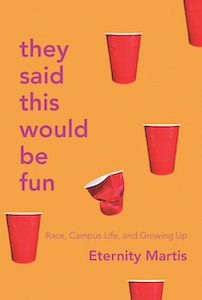
Excerpted from They Said This Would Be Fun by Eternity Martis. Copyright © 2020 Eternity Martis. Published by McClelland & Stewart, a division of Penguin Random House Canada Limited, a Penguin Random House Company. Reproduced by arrangement with the Publisher. All rights reserved.
SHOP: They Said This Would Be Fun by Eternity Martis ($25) at chapters.indigo.ca.
Newsletter
Join our mailing list for the latest and biggest in fashion trends, beauty, culture and celebrity.
Read Next

Fashion
H&M's Latest Designer Collab With Rokh Just Dropped (And It's So Good)
We chatted with the emerging designer about the collaboration, his favourite pieces and more.
by : Melissa Fejtek- Apr 18th, 2024

Culture
5 Toronto Restaurants to Celebrate Mother’s Day
Treat your mom right with a meal at any of these amazing restaurants.
by : Rebecca Gao- Apr 18th, 2024
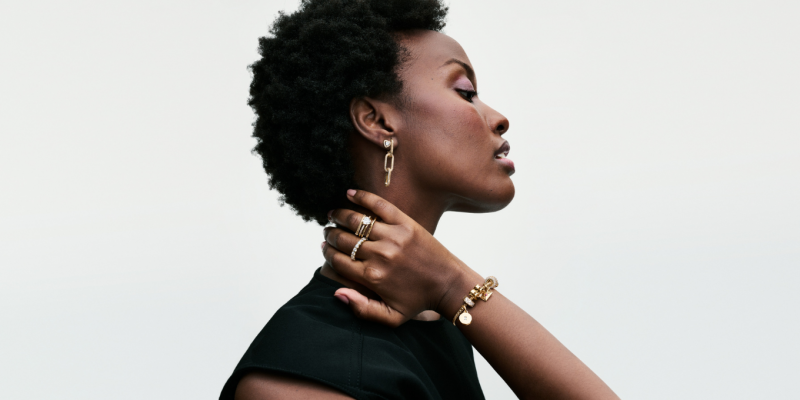
Fashion
This Jewellery Brand Has a Whole New Look And It’s Everything
Here are the seven pieces we’re coveting.
by : ELLE Canada- Apr 10th, 2024

